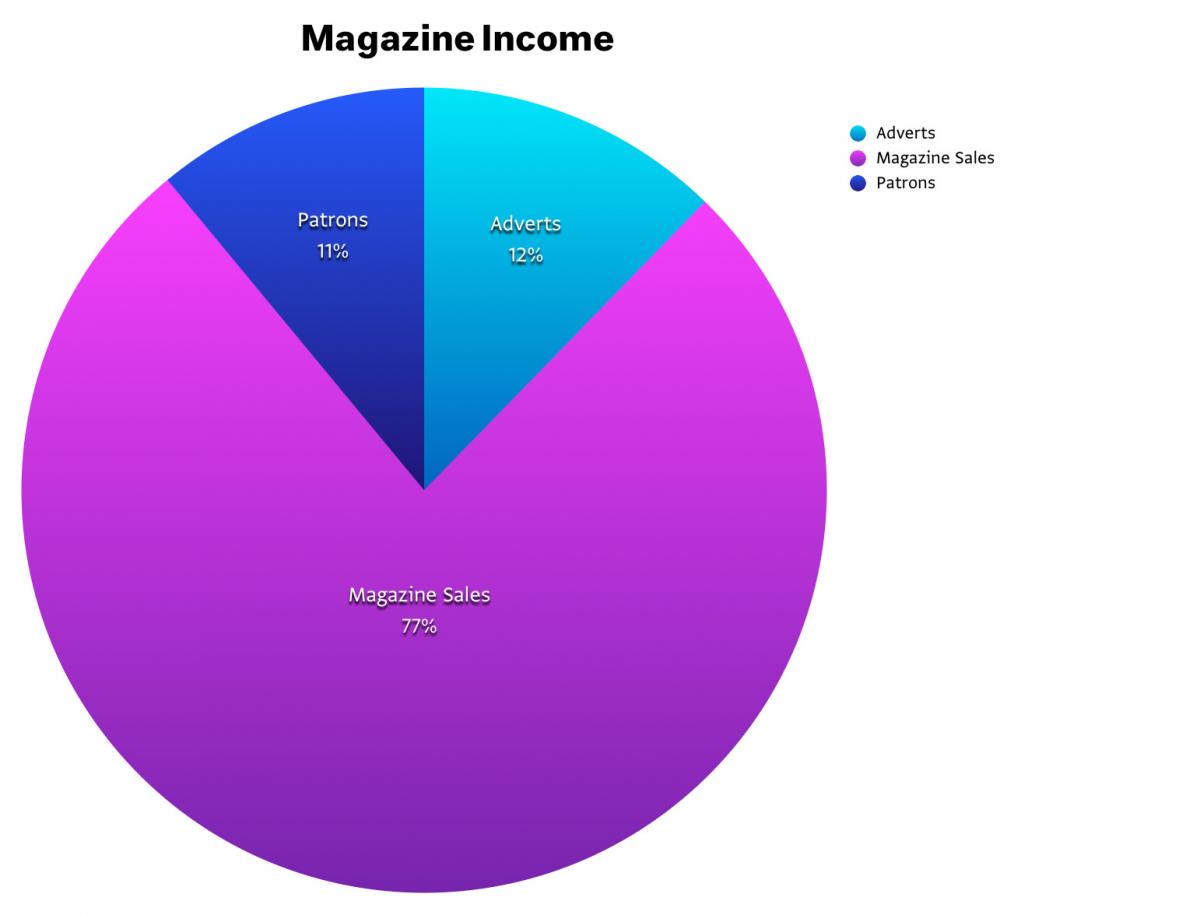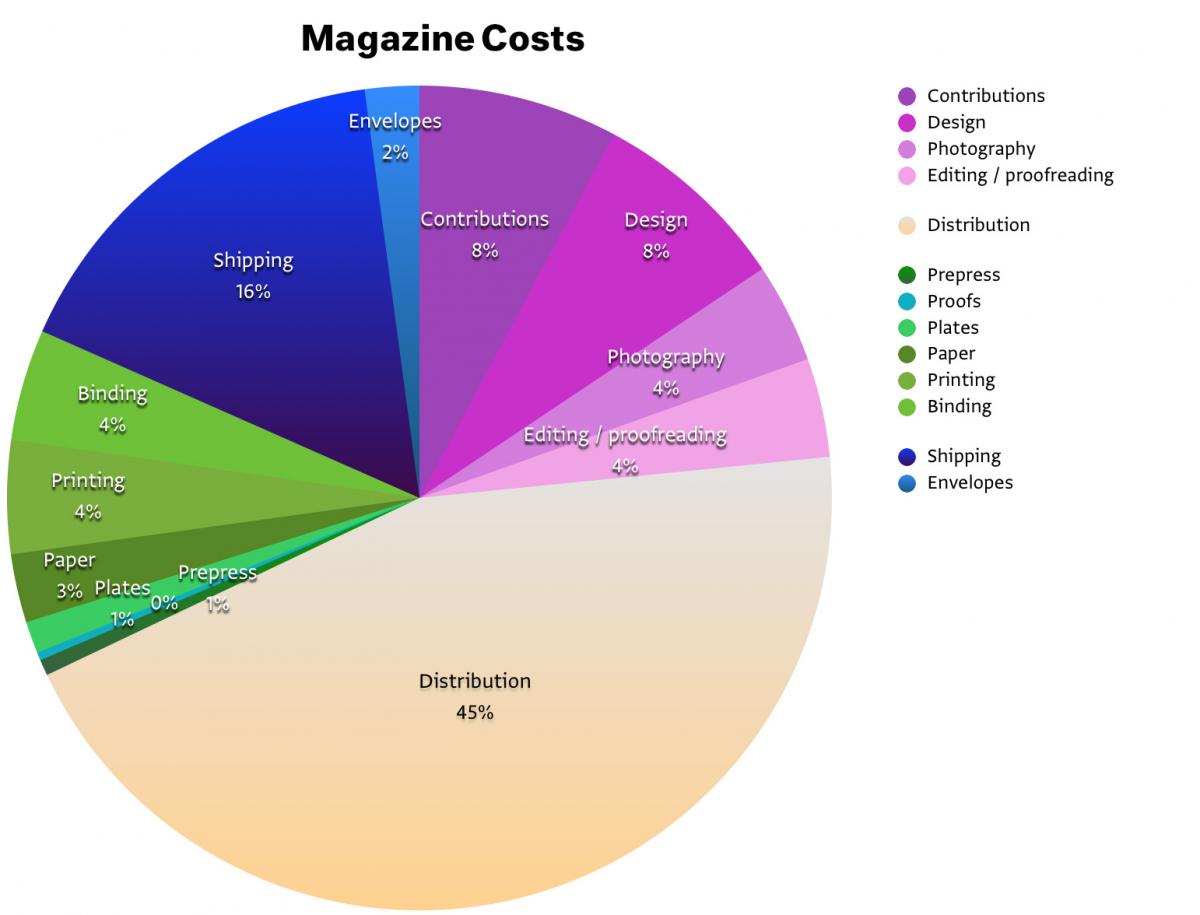The Costs of Running a Magazine
‘Why does it cost so much?’ is a frequently asked question about Works That Work. In this blog post we break down the costs of producing the magazine.
We recently conducted a readers’ survey. Aside from providing valuable feedback about our content, the survey uncovered a common concern: a significant number of people consider the magazine expensive.
Certainly, in some places €16/US$20 for print and €8/US$10 for the digital edition may be the price of a couple of drinks, but elsewhere in the world it can be a significant sum, especially when other magazines cost a fraction of that price. But try this: open one of those other magazines and count how many of its pages are advertising and how many pages are content. If you discover that the magazine is more than half advertising, don’t be surprised; the industry average is 54%, which says a lot about where the publishers get their money (and therefore, whose interests they must serve). In most cases, that advertising accounts for over 95% of the publisher’s income.
As trivial or as radical it may seem, WTW is a magazine made for its readers. Readers finance it, publicise it and help to distribute it. That’s why we consider our readers our investors and strive to be completely transparent with them. We restrict advertising to 5% of our pages, and it contributes 12% to our income. Which means that you, the readers, contribute 88% to our budget, including our loyal magazine patrons. We like that!

Where does that money go? Each issue of WTW costs over €30,000 to put out. With an average print run of 4,000 copies per issue, the cost of getting the magazine from the drawing board to your doorstep works out to roughly €8.50 per copy. Content (articles, photography, editing, proofreading and design) accounts for 23% of that cost, while production (printing, binding, plate-making, pre-press, paper) accounts for 13%, and delivery (shipping, handling, packaging materials) for another 18%. There is 45% left as a possible profit when we sell the magazine for the full price online, although as it currently stands, if we sell out the whole print run we break even on the issue. When we sell the magazines in shops, the situation is different. A traditional magazine distribution pockets 60-80% of the magazine price (yes, the distributor charges more than all the authors, photographers, editors, designers and printers put together), that’s why we prefer to work with our system of Social Distribution, providing the discount to our readers instead.

Are there things that we could do cheaper? We could pay authors less, and we could print overseas, but we choose to pay fair fees to all contributors and print here in the Netherlands because it is socially responsible (and results are great). Nevertheless, there are things we have been doing to give you more value for your money.
First of all, the issues are getting steadily longer. Issue 1 was 80 pages, whereas Issue 4 is 96 pages long, or 20% more pages for the same price. This trend will likely continue in Issue 5. Also, starting now, we offer free shipping anywhere in the world (absorbing an average cost of about €3,60 per magazine for envelopes, postage and handling). Our shipping and handling fee was €4, so a print copy of Issue 4 is in fact 32% cheaper per page than a print copy of Issue 1.
Of course the best way to lower the price would be through economies of scale: the more copies we print and sell, the more we can lower the price, but this can only happen as readership expands. You, the readers, can have a huge impact on this process by sharing the magazine with your friends, relatives and colleagues, and encouraging them to subscribe.
And speaking of economies of scale, there is a way to get the magazine at a 50% discount right now. Get together with your friends and order seven or more copies, and you get them for €8, a price which is actually below the production cost. Get in touch to benefit from this unique opportunity.
We do anticipate one major added expense in the foreseeable future: eventually we will have to hire an editor-in-chief. We seldom mention the fact that our editor and publisher Peter Biľak is working for free, but you may have noticed in the Issue 4 colophon that he refers to this project as ‘an expensive hobby’, and if you’ve visited Typotheque, (Peter’s ‘day job’), you may have noticed the wide range of projects clamouring for his attention. To make the magazine truly viable, we will eventually have to hire a part-time editor, something we can’t afford to do yet. As always you can help.
In the meantime, we will keep working to make this a magazine that is worth paying for, and may revisit our pricing as we grow and develop. Currently we are breaking even and paying all the bills, which is a success in and of itself. Thank you for your support so far!